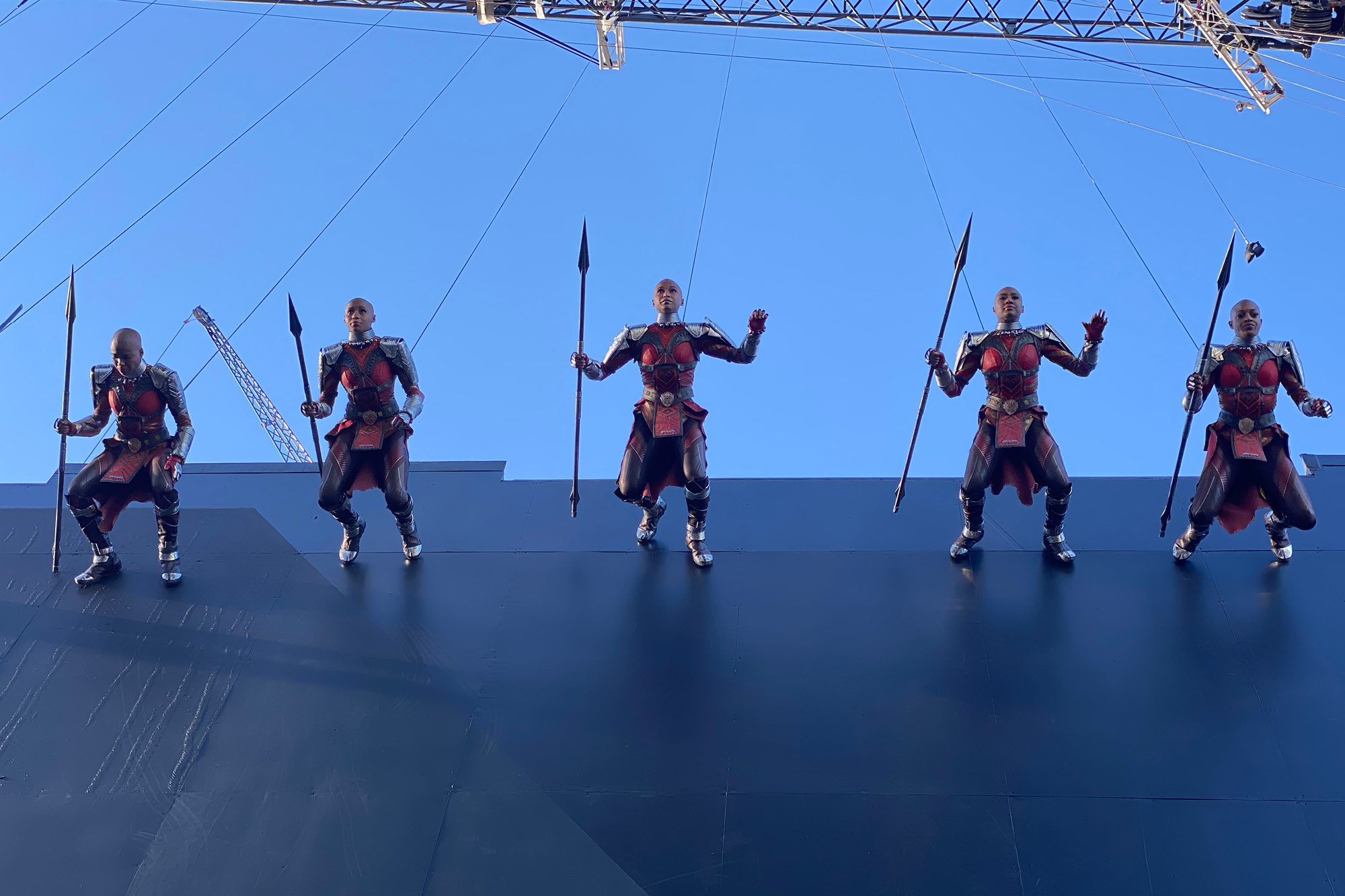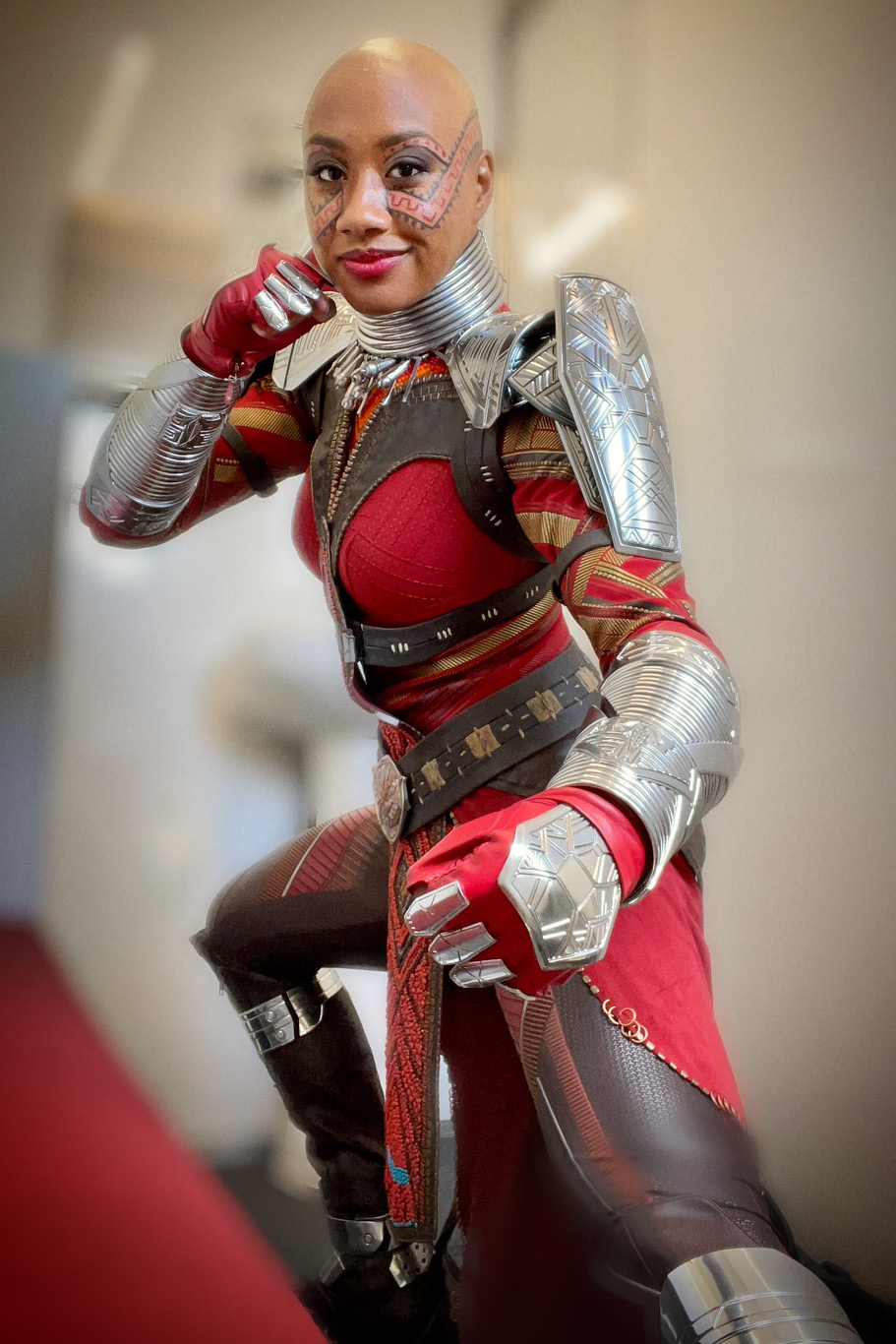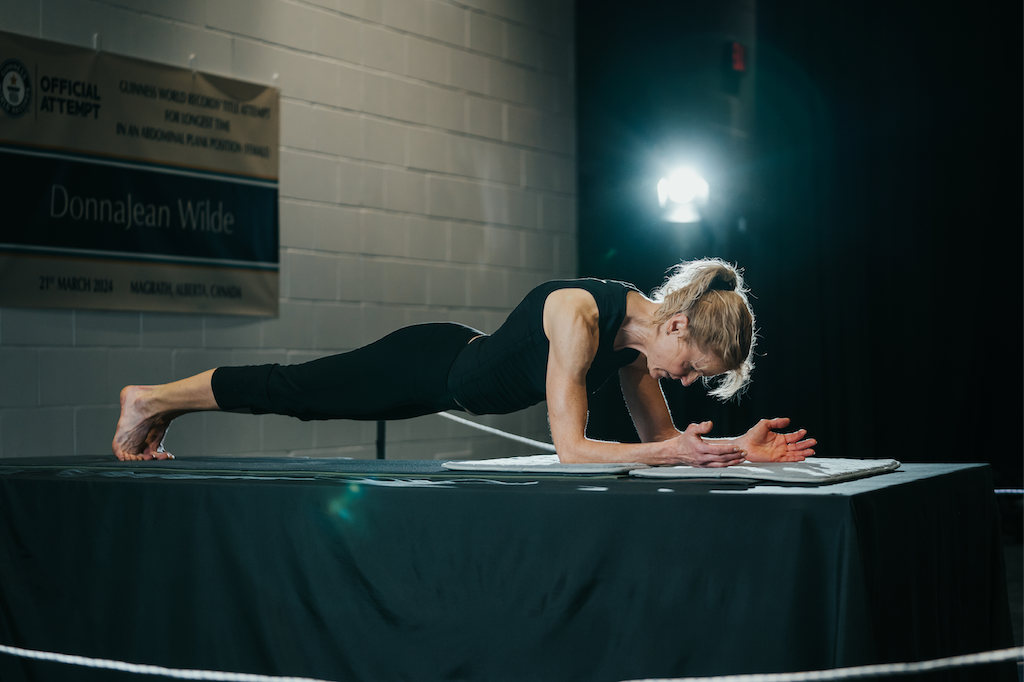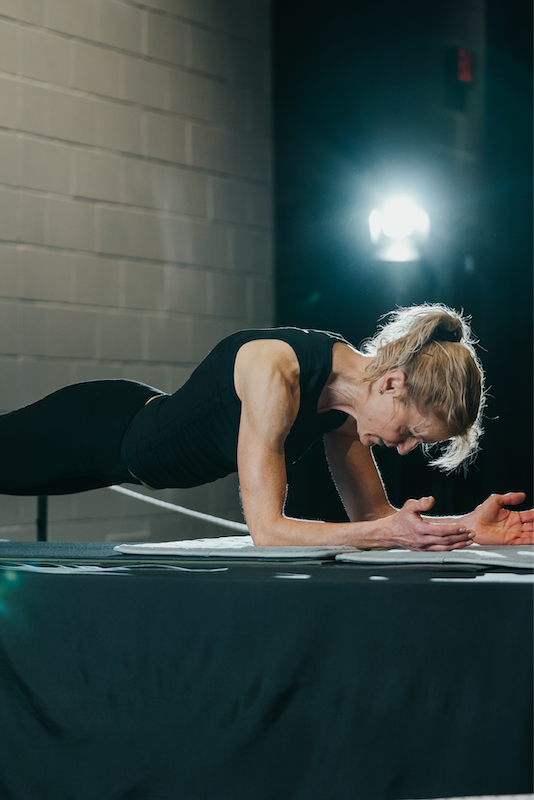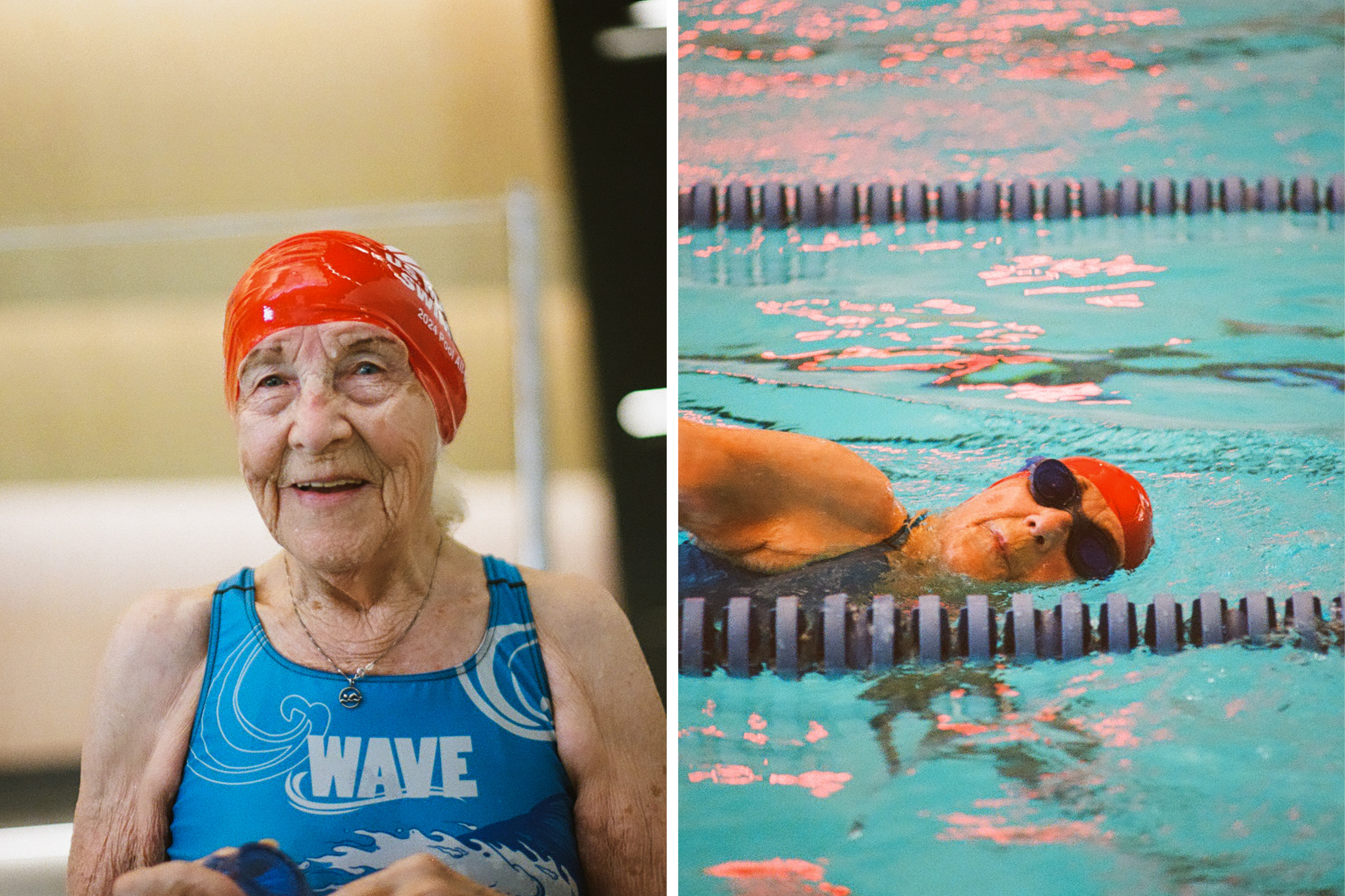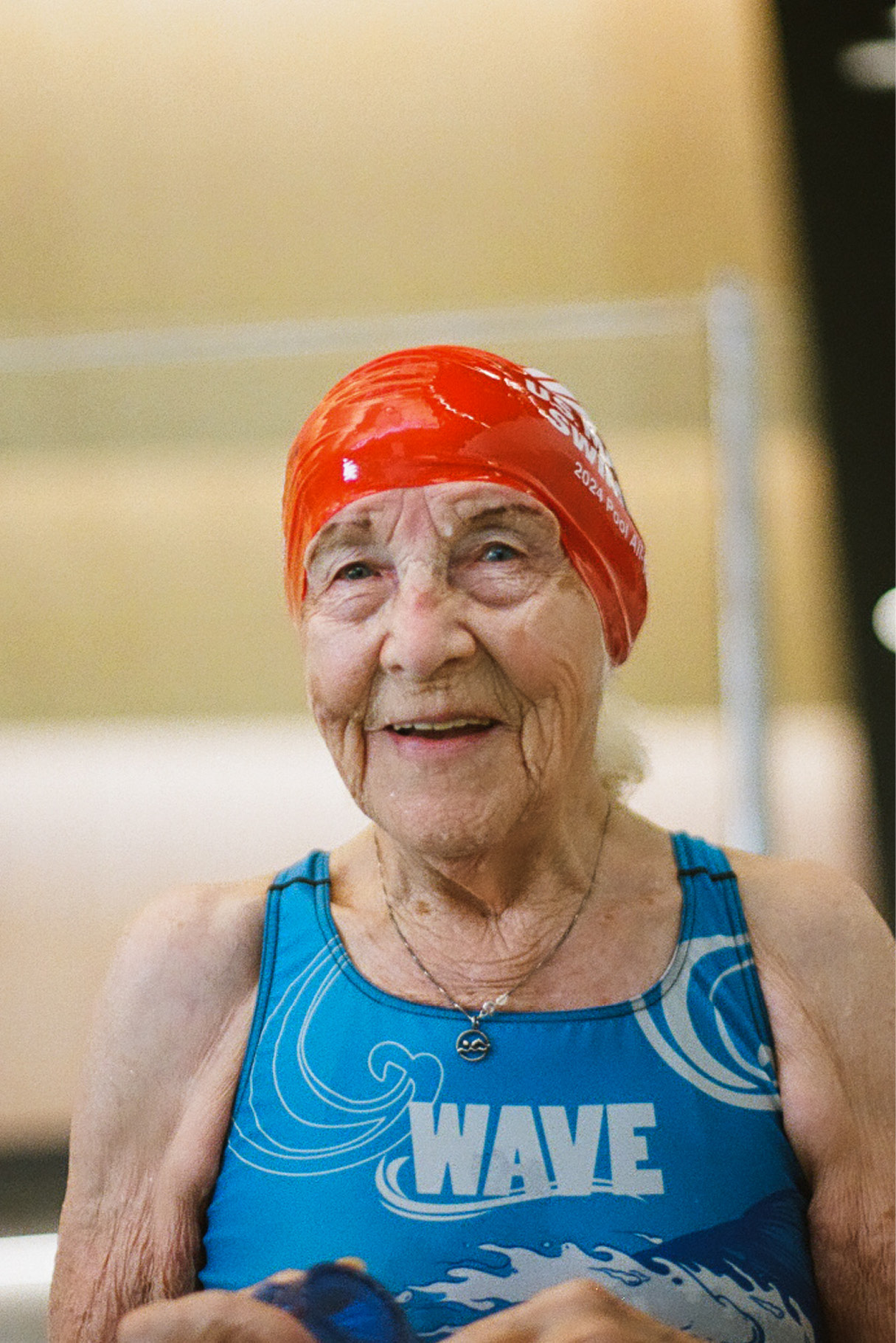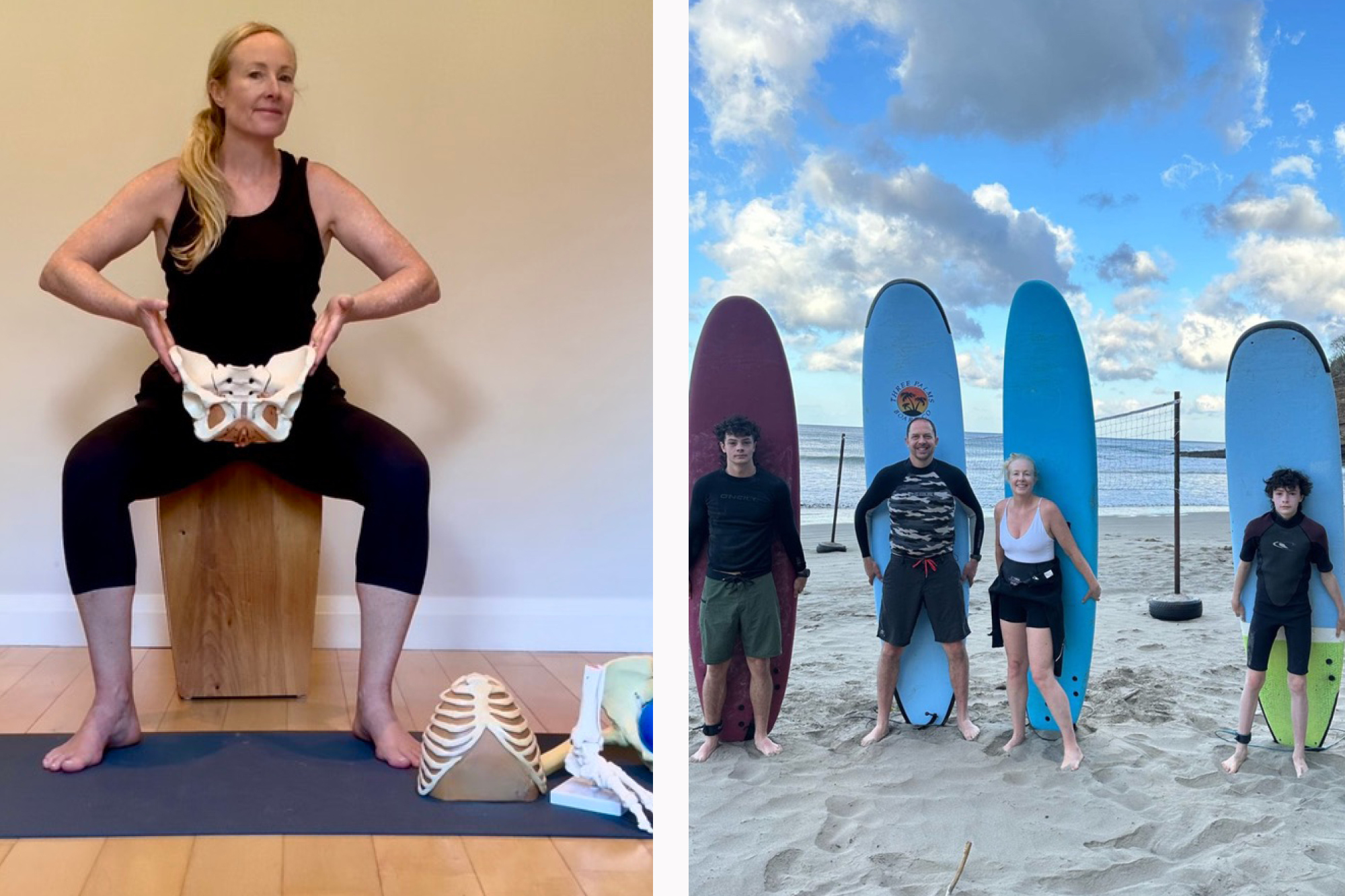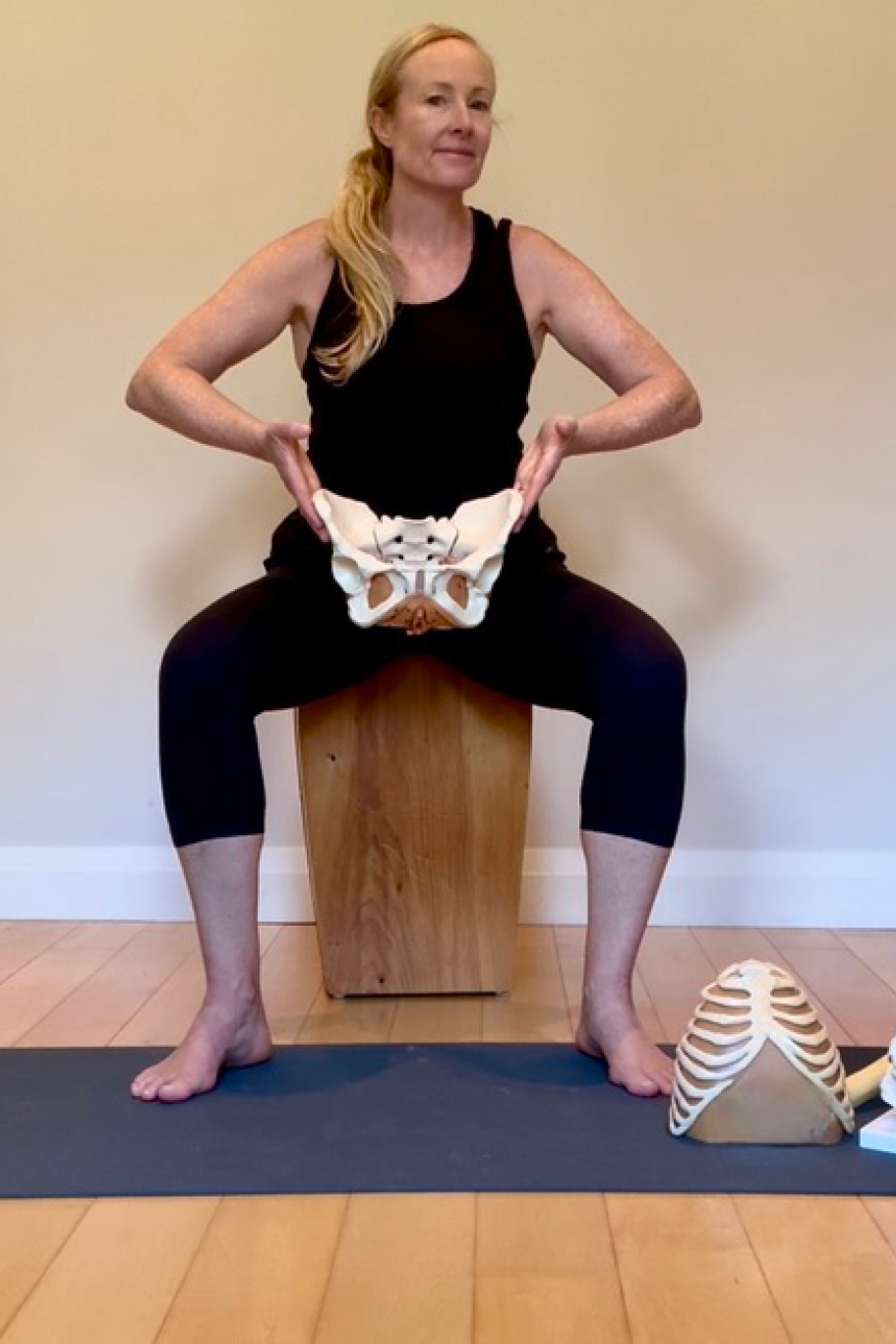Maya Macatumpag is a movement chameleon. As a second-generation stuntwoman and actress with over 20 years of experience in the industry, she has carried out stunts on projects like Deadpool 2, Good Boys, Star Trek: Discovery, Van Helsing, Peacemaker and several other DC television series. She looks the part of a kickass superhero – her hair still growing out from the buzzcut she maintained while playing a Dora Milaje warrior and stunt double for Michaela Coel in Marvel’s newest film, Black Panther: Wakanda Forever (2022).
Maya’s movement journey started at the age of 5, jump-started by her mother Deb Macatumpag, one of the first Black-Canadian stuntwomen. By the age of 8, Maya began her career as a stunt kid, working on the pilot of Smallville. Decades later, her career as a full-time performer has taken her all over the world, and her work has been recognized at the Vancouver UBCP/ACTRA Awards and Taurus World Stunt Awards.
Despite being at an all time high in her career, Maya’s drive is unwavering. She continues to diversify her background in movement with an insatiable curiosity and yearning for improvement – a beginner in each new craft. Embodying the Dora Milaje she plays in the film, Maya’s warrior spirit and determination also span further than her own personal goals. Continuing her mother’s work as a trailblazer for a new generation, Maya aims to be the change – breaking down barriers, creating safe spaces and forging a new path for BIPOC members in the Vancouver film industry as a whole.
***
Sean Patterson: What is your history with movement?
Maya Macatumpag: It started at birth. Both my parents were very athletic human beings – my mother was a dancer, my father was a martial artist and grew up in Baguio, Philippines. He grew up doing CrossFit before it was CrossFit, parkour before it was parkour! And I grew up in the Dojo. When I was very young my mom took to it for stunts and I just grew up there as her kid. I started at 5 and a half and I got my black belt when I was 12. So the movement journey started early with martial arts as my base, then grew into gymnastics and dance, and basketball later on in life.
How important is it to have a diversified background as a stunt performer?
It’s really important depending on who you are. Everybody in stunts and as a performer in the film industry, they have their own journey. In stunts, there are people who specialize or are very niche in one thing. But for the most part, the people that I know who have had the longest careers – the most wide-reaching careers – they’re the ones that have a very diverse background in movement. They do fighting, they do wirework, cars, they do motorcycles, they do it all.
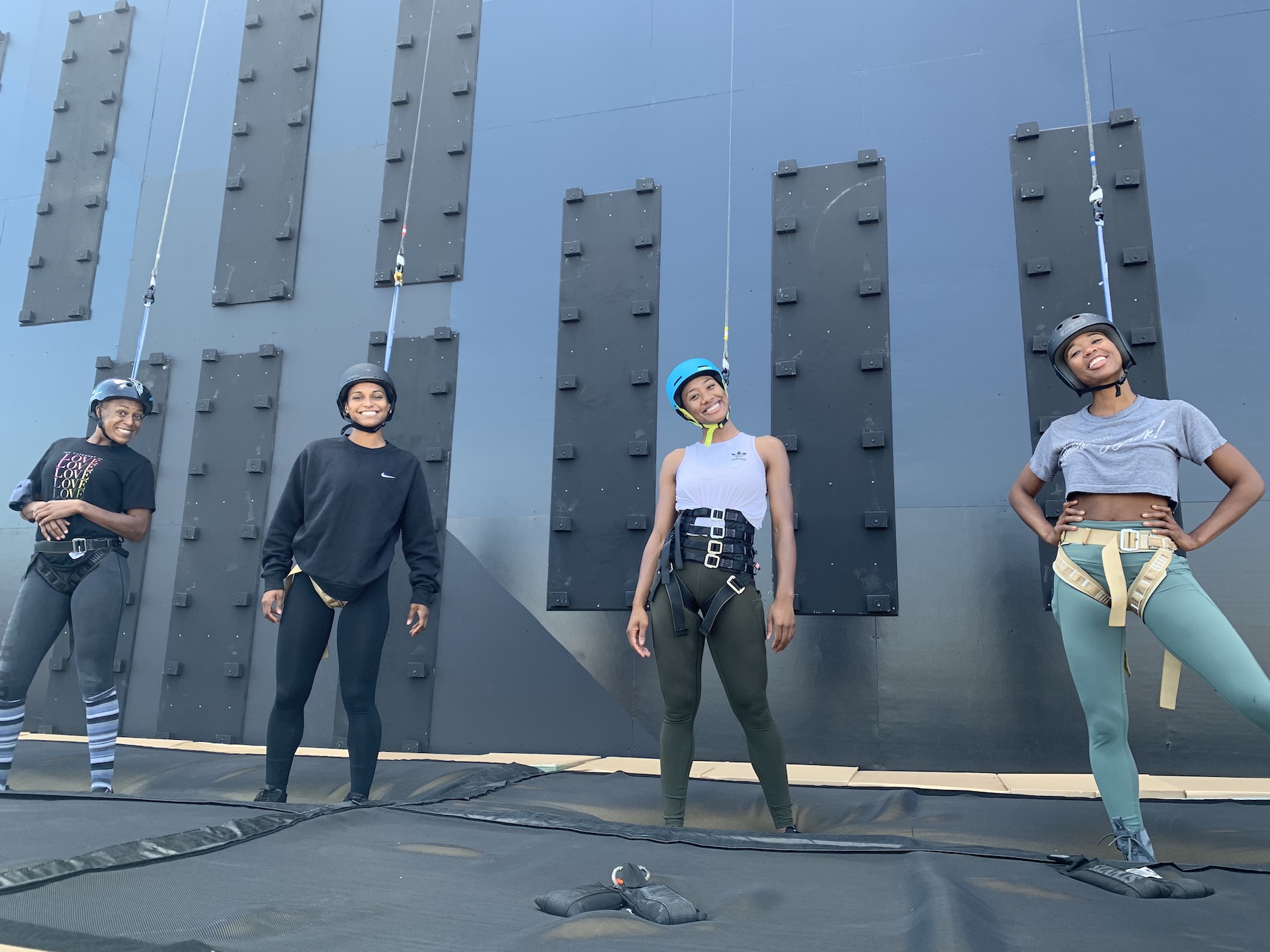
If you had to choose between dance, martial arts or basketball, which one would you choose and why?
I wouldn’t, and that’s how I got here! I was that person that dabbled in everything. I did go to college for basketball and loved it, but I also knew that I didn’t want to go to the WNBA. I wanted to keep diving into other things.
Stunt work is full of all those diverse types of movement that you’ve sought all your life — does that make it feel more like play than work to you?
Depends on the job! Depends on what they’re asking me to do. Some days, it’s play! It’s like when I get to have a cool weapon and you know I’m on Black Panther and they’re like, “Maya you’re going to have daggers, you’re going to be a Midnight Angel and fight and fly!” It’s like “Okay, I’m going to play! This is not work.” Then there are days where they’re like, “Maya you’re going to get tackled to the ground … over and over, outside with rain towers,” and I’m like, “Okay, this is work.”
How do you push yourself to keep going when you’re learning a new practice? Like learning Bo staff or learning to use daggers for Black Panther: Wakanda Forever?
I tell myself that the craft that I chose makes me a beginner in everything that I’m doing, all the time, and that’s why it’s interesting. And if I were to perfect something and know it so well, and not have another journey where I can reinvent myself or relearn something, I would be very bored.
How has playing a Dora Milaje changed your approach to stunt training? Is it different training in group combat versus as an individual?
Being a Dora is very specific and it came with very specific training. It’s different from stunt training because we are playing these women as well, we’re not just doubling. And also these women were so specific and strong and bold in their characters – they’re the ones who watch over the king. So they are the strongest, most technical, elite group of warriors. That had to be embodied in our training. We ran a mile every day, we did stances for another hour, we worked weapons for another couple hours, worked techniques, and then we did Bo staff and Cali. Each project is different and a lot of the training that we do in stunts depends on who our coordinator or fight coordinator is.
The stunt industry is a typically male-dominated industry. How did it feel to work with so many female stunt performers on Black Panther: Wakanda Forever?
It was amazing, it was a sisterhood! A very specific sisterhood because they were also black women. I got to work with seven black women every single day, who would kiki and joke. We understood the different paths that we had – but also the similarities in what we had to fight and endure to get to where we are, be who we are in this industry, and get these roles. To have that level of community, camaraderie, and, honestly, shared trauma in a lot of instances, was really empowering and helped me grow as a woman – outside of just stunts.
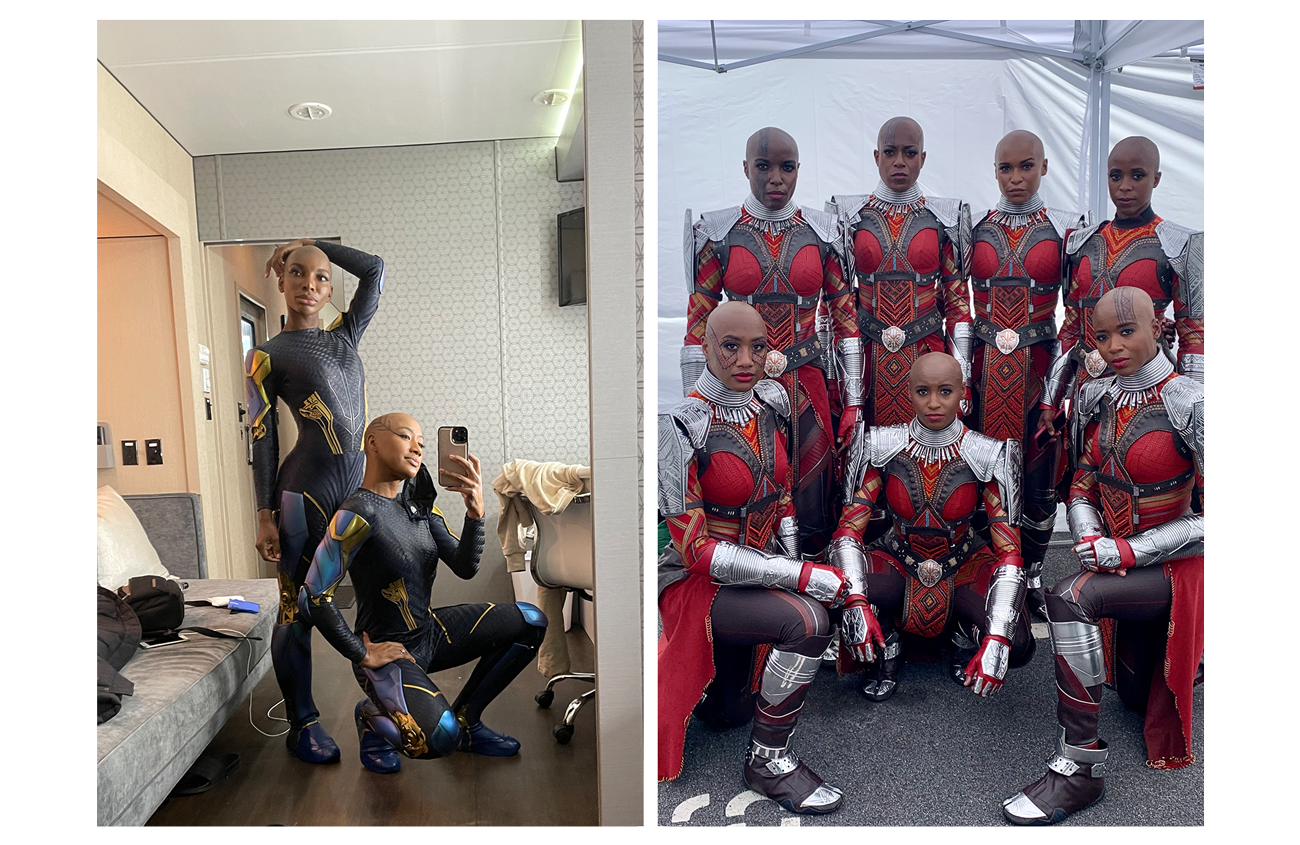
What type of stunt work across your career do you feel most empowered by? Hand-to-hand combat, wire work, weapons?
A specific moment in my career that I would highlight was working on a show called Van Helsing. There was a stunt coordinator named Dan Rizzuto, and he empowered me as a performer. We did wire work and fight choreography for the character that I was doubling – but Dan is a stickler in terms of what he likes. He’s a very technical and skilled martial artist, so he really pushed me on that project.
How do you prepare yourself mentally for big or scary stunts?
It’s funny, most people would assume that I get into that athletic hype-mode, but I actually do the opposite. I zone in, and get into prayer mode. For me, my faith is everything. When I’m doing a big gag, obviously they’re rehearsed, but you do assume some calculated risk. So I go to my Psalm 91 and listen to my gospel music to get into a zone. Then I just trust in what God wants me to do, and what I’ve got to do on that day.
How do you protect your body from injury during stunts? Is it breathwork, activating your core, your posture?
It’s a little bit of everything, and all of that in one! Breathwork, absolutely – to be able to take impact in a proper way. Break falls – so lots of technique in placing your body for when it does hit the ground, you’re not breaking bones, just bumps and bruises. And it’s also pads! We know that if we have to fall, hit a wall, or do some of this wire work, there’s going to be a big impact. We put on armadillos, elbow pads and knee pads, and so do our actors! We make sure they’re padded up and protected, so that when they do their stunts they don’t have to worry.
What was your hardest stunt on Black Panther: Wakanda Forever?
It was the Bandaloop work! We did some amazing work with David Hugghins and the entire rigging team that originally comes from Cirque du Soleil. So you’re picked up from a harness that goes around your waist, and while perpendicular to the wall, you do all these different flips and fighting sequences on the side of the ship, in the movie. But it was a huge wall and the sequences were really intricate, because you’re dealing with a lot of different wires and all these performers. Then on top of all of that we had our Bo staff that we were using to fight with! So that was the coolest experience.
And how did you feel after achieving tough stunts like that? Are you feeling the community, and feeling supported or more like “Okay, back on solid ground!” ?
Definitely back on solid ground! Another sequence within that was the Dora Milaje running and jumping off the side of that wall and returning on a wire. And practically, it was as tall as a small building! So we were just thinking “Oh, it’s cold up there!” – especially with our bald heads, and we were very happy to land back on the ground. But we also wanted to be able to execute that sequence to make the director, Ryan Coogler, happy and he really was.
When shooting a fight scene over multiple days in a row, how do short turnaround times impact your recovery process?
The recovery process was major, particularly on this project. We were shooting a feature film – but our schedule got turned on its head, so we had very little turnaround time. We would shoot for fourteen hours and need to be back the next morning, ready to keep doing it. We had a team of osteopaths for our stunt performers and the cast to be able to work on us in between takes and while we were rehearsing. But recovery looks different for everyone. So for me, it was going to see the osteo, doing my therapy and also doing a lot of band work, because I was nursing a back injury at the time.
If you could perform stunt work for any other Marvel movie, which would it be?
I’m not sure … I think if or when they do another Avengers, it would be cool to be able to play a Dora Milaje on a different scale, as myself! Or a Midnight Angel again.
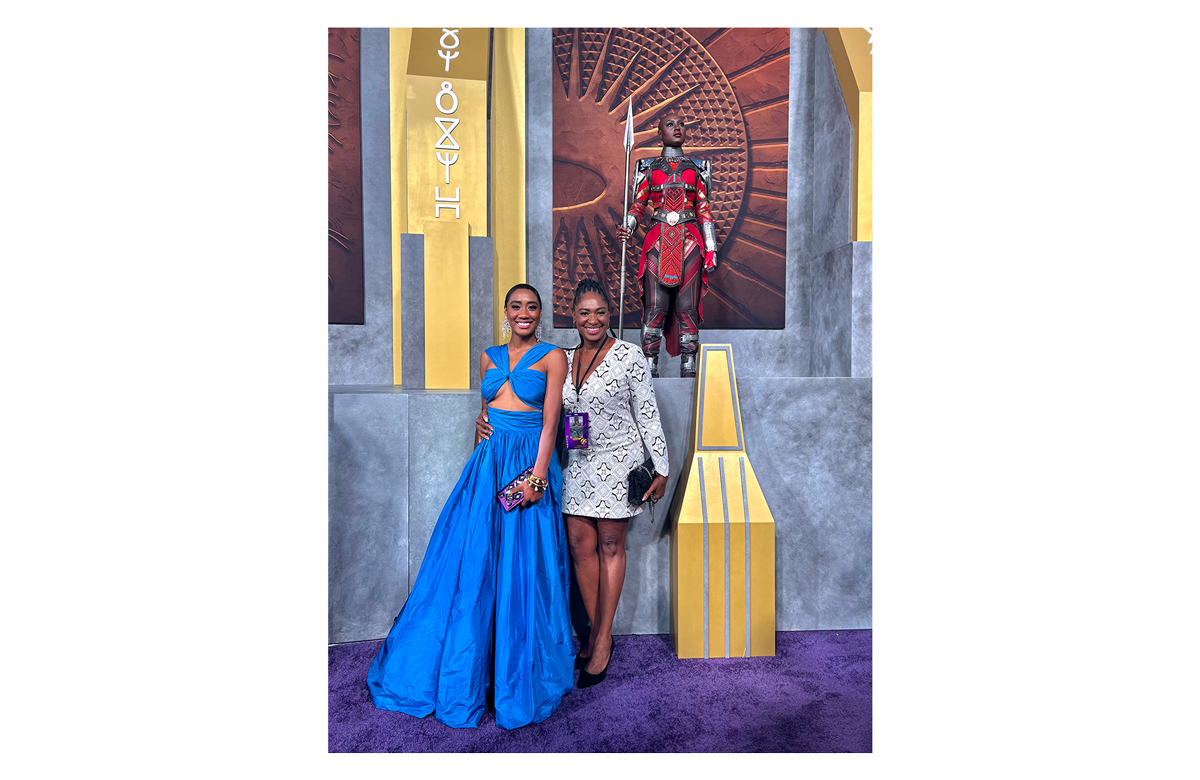
As a second generation stunt performer, what is the biggest lesson your mother has taught you about being active?
That I am responsible for my own body. Even though we have an entire crew and stunt team that looks after each other, I am the number one person that’s going to take care of myself the best way that I can. It’s my responsibility, and part of my job is to be active and intentional in my physical therapy, my mental therapy, and all the things that come with this industry. That knowledge was a gift that she gave to me.
How has community influenced your relationship to movement? You’re surrounded by stunt performers like your husband, your mother, the people you train with, and the other Dora Milaje.
It’s everything! It helps me day-to-day, to come home and keep pushing for my own individual goals and the goals that I have for black women and BIPOC members in the Vancouver industry in general. Seeing my husband do his thing – transitioning into stunts after being a professional basketball player – it’s really wonderful to see how his journey is very specific and unique. And I’ve been able to relate to my mother more – breaking down barriers and glass ceilings, and seeing the work that she did generations before me come to fruition through my career.
How do you move for fun outside of work?
I like going out dancing! I like vibing, and going to different art events. I love and miss that about shooting in Atlanta, actually. They have a huge community for dancing and cool live creative events!
***
Maya’s not slowing down. Empowered by having to be a beginner again and again, Maya’s not limiting herself and she won’t be put into a box! Catch her in the newest season of The Flash and in the upcoming Apple TV+ series, Godzilla and The Titans.
Watch the full interview “Behind The Stunts with Maya Mac” to meet the warrior and see behind the scenes photos and videos of Maya in action!
Live well and age better with your weekly 10-minute wellness habit. Join Movement Living to get your free wellness newsletter, delivered every Monday.
